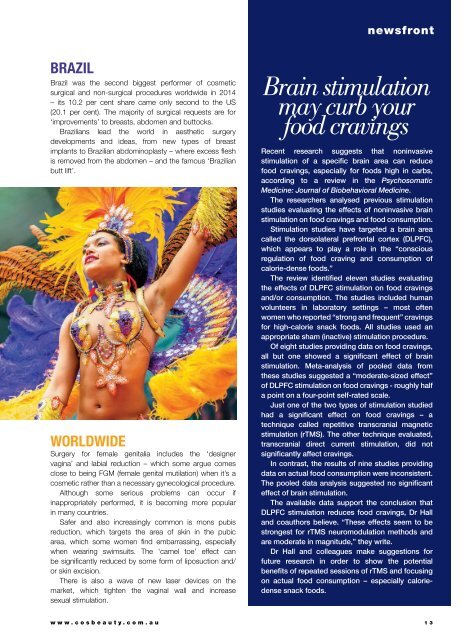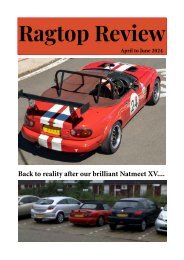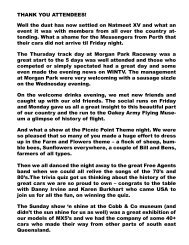Cosmetic Surgery & Beauty #73
Cosmetic Surgery and Beauty is the definitive consumer guide to aesthetic enhancement in Australia.
Cosmetic Surgery and Beauty is the definitive consumer guide to aesthetic enhancement in Australia.
Create successful ePaper yourself
Turn your PDF publications into a flip-book with our unique Google optimized e-Paper software.
newsfront<br />
Brazil<br />
Brazil was the second biggest performer of cosmetic<br />
surgical and non-surgical procedures worldwide in 2014<br />
– its 10.2 per cent share came only second to the US<br />
(20.1 per cent). The majority of surgical requests are for<br />
‘improvements’ to breasts, abdomen and buttocks.<br />
Brazilians lead the world in aesthetic surgery<br />
developments and ideas, from new types of breast<br />
implants to Brazilian abdominoplasty – where excess flesh<br />
is removed from the abdomen – and the famous ‘Brazilian<br />
butt lift’.<br />
Worldwide<br />
<strong>Surgery</strong> for female genitalia includes the ‘designer<br />
vagina’ and labial reduction – which some argue comes<br />
close to being FGM (female genital mutilation) when it’s a<br />
cosmetic rather than a necessary gynecological procedure.<br />
Although some serious problems can occur if<br />
inappropriately performed, it is becoming more popular<br />
in many countries.<br />
Safer and also increasingly common is mons pubis<br />
reduction, which targets the area of skin in the pubic<br />
area, which some women find embarrassing, especially<br />
when wearing swimsuits. The ‘camel toe’ effect can<br />
be significantly reduced by some form of liposuction and/<br />
or skin excision.<br />
There is also a wave of new laser devices on the<br />
market, which tighten the vaginal wall and increase<br />
sexual stimulation.<br />
Brain stimulation<br />
may curb your<br />
food cravings<br />
Recent research suggests that noninvasive<br />
stimulation of a specific brain area can reduce<br />
food cravings, especially for foods high in carbs,<br />
according to a review in the Psychosomatic<br />
Medicine: Journal of Biobehavioral Medicine.<br />
The researchers analysed previous stimulation<br />
studies evaluating the effects of noninvasive brain<br />
stimulation on food cravings and food consumption.<br />
Stimulation studies have targeted a brain area<br />
called the dorsolateral prefrontal cortex (DLPFC),<br />
which appears to play a role in the “conscious<br />
regulation of food craving and consumption of<br />
calorie-dense foods.”<br />
The review identified eleven studies evaluating<br />
the effects of DLPFC stimulation on food cravings<br />
and/or consumption. The studies included human<br />
volunteers in laboratory settings – most often<br />
women who reported “strong and frequent” cravings<br />
for high-calorie snack foods. All studies used an<br />
appropriate sham (inactive) stimulation procedure.<br />
Of eight studies providing data on food cravings,<br />
all but one showed a significant effect of brain<br />
stimulation. Meta-analysis of pooled data from<br />
these studies suggested a “moderate-sized effect”<br />
of DLPFC stimulation on food cravings - roughly half<br />
a point on a four-point self-rated scale.<br />
Just one of the two types of stimulation studied<br />
had a significant effect on food cravings – a<br />
technique called repetitive transcranial magnetic<br />
stimulation (rTMS). The other technique evaluated,<br />
transcranial direct current stimulation, did not<br />
significantly affect cravings.<br />
In contrast, the results of nine studies providing<br />
data on actual food consumption were inconsistent.<br />
The pooled data analysis suggested no significant<br />
effect of brain stimulation.<br />
The available data support the conclusion that<br />
DLPFC stimulation reduces food cravings, Dr Hall<br />
and coauthors believe. “These effects seem to be<br />
strongest for rTMS neuromodulation methods and<br />
are moderate in magnitude,” they write.<br />
Dr Hall and colleagues make suggestions for<br />
future research in order to show the potential<br />
benefits of repeated sessions of rTMS and focusing<br />
on actual food consumption – especially caloriedense<br />
snack foods.<br />
www.cosbeauty.com.au 13


















